We’ve all heard the horror stories of spiders lurking in the dark corners of our homes, but have you ever stopped to wonder just how many spiders are in the average house? The truth may be more startling than you think. From tiny spiders that you can barely see to large, hairy tarantulas, this article will uncover the startling truth about the number of spiders living in our homes.
Types of Spiders Found in Homes
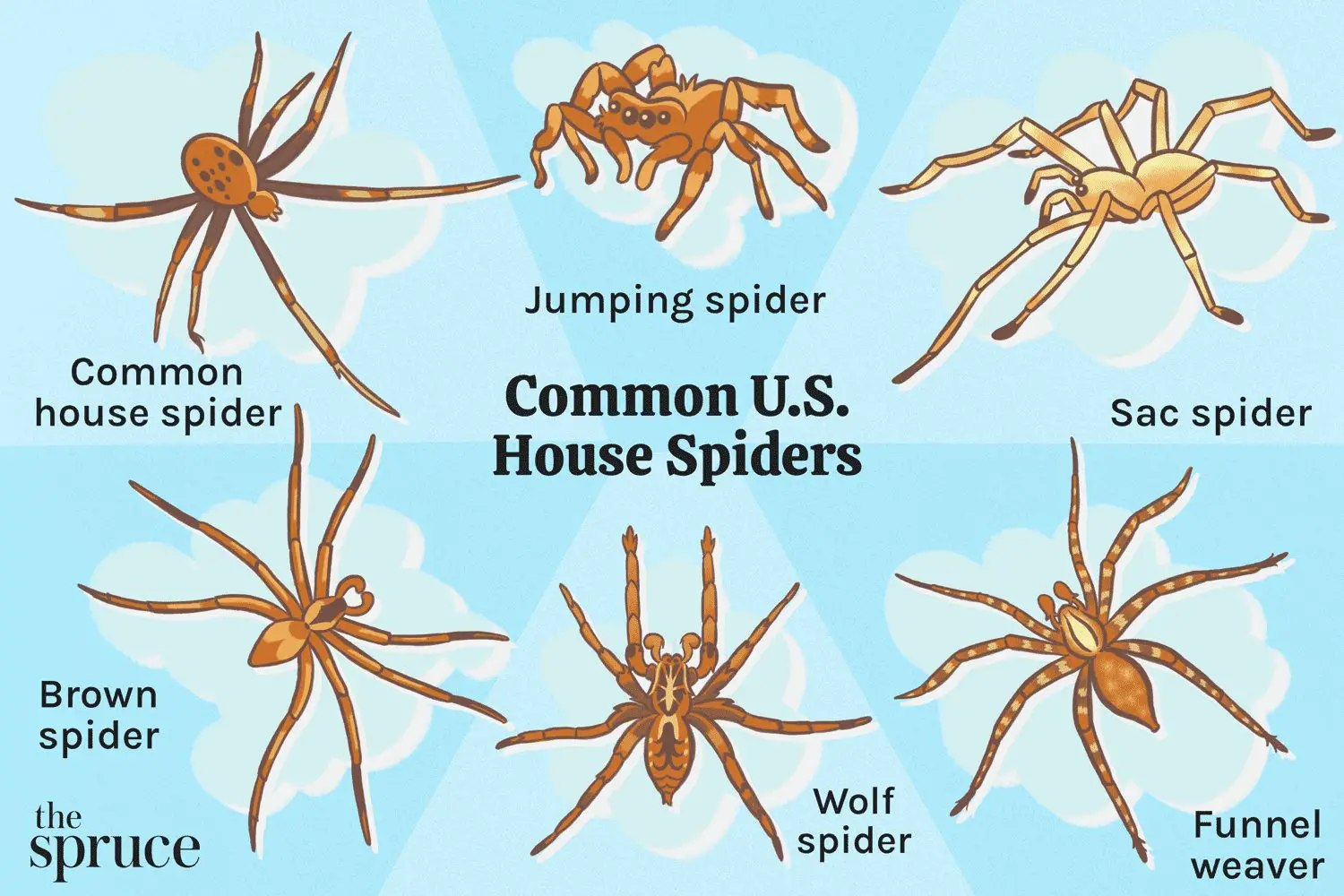
Spiders are common household pests, but not all spiders are the same. There are several species of spiders that may be found in and around the home, including the American House Spider, the Daddy Long Legs, the Common Cellar Spider, the Wolf Spider, the Jumping Spider, the Brown Recluse Spider, and the Black Widow Spider.
The American House Spider is perhaps the most common spider found in homes. It is usually yellow to light brown in color and is usually found in dark, undisturbed corners and crevices. They make cobweb-like webs in corners and behind furniture and are harmless to humans.
Daddy Long Legs are also common in homes. They are also harmless to humans and usually live in dark, damp areas such as basements, closets, and bathrooms. Unlike other spiders, they do not make webs and instead hunt for food.
The Common Cellar Spider can be found in basements and other damp, dark parts of the home. They are light brownish-gray in color and have extremely long legs. They make webs that look like a tangled mess, but are in fact very organized.
Wolf Spiders are also common and can be found both indoors and outdoors. They are typically black or gray in color and have distinct markings on their bodies. They are fast runners and are often mistaken for a more dangerous spider.
Jumping Spiders are small, black spiders that can be found both indoors and outdoors. They are able to jump long distances and are usually found in dark, undisturbed areas. They are harmless to humans.
The Brown Recluse Spider is one of the most dangerous spiders found in homes. It is usually light brown in color and has a distinctive violin-shaped marking on its back. It is usually found in dark, undisturbed areas such as attics and basements.
The Black Widow Spider is one of the most feared spiders and is most common in the southern United States. They are usually black with a red hourglass shape on their abdomen. They are usually found in dark, undisturbed areas and can be dangerous to humans.
Spiders are a common household pest, and while some are harmless, some can be dangerous. It is important to be aware of the different types of spiders and to take proper precautions to prevent them from entering your home.
Common Locations of Spiders in Homes
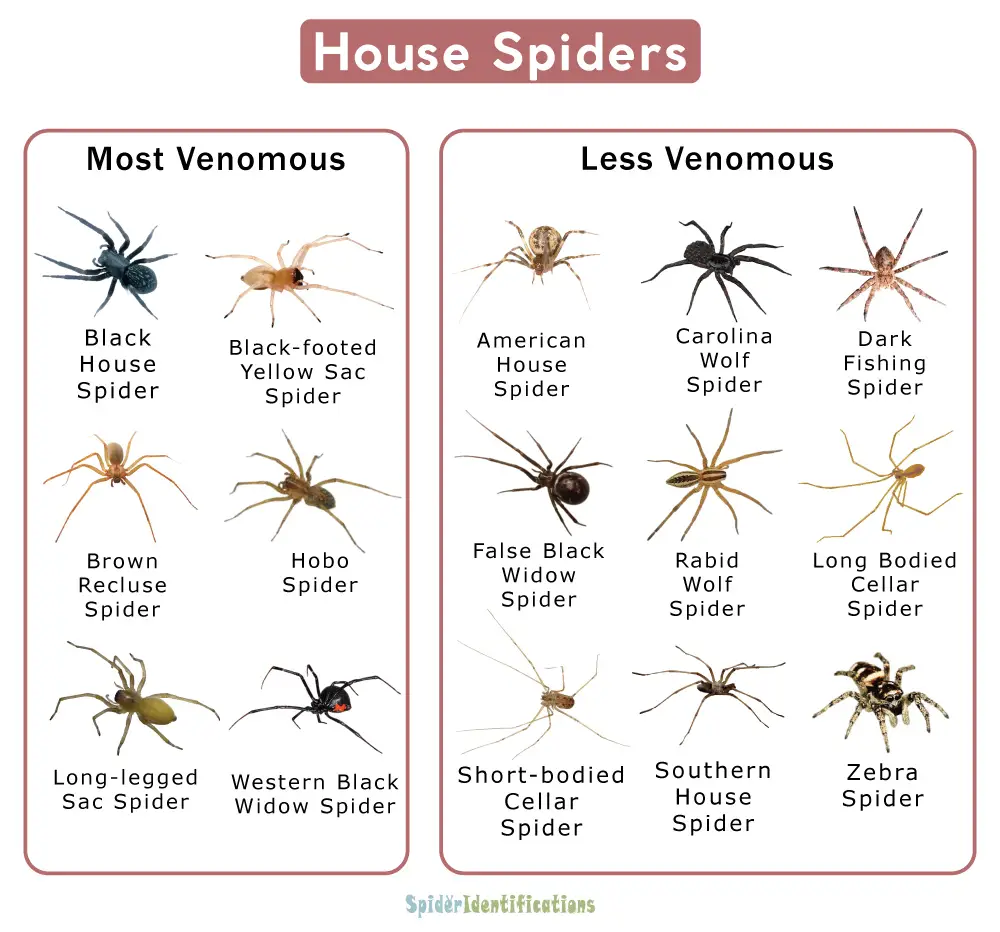
| Location | Description |
|---|---|
| Corners | Spiders like to hide in the corners of rooms, where they can find food and places to build webs. |
| Ceilings | Spiders also like to hide on ceilings, often near light fixtures or in dark corners. |
| Doors, Windows & Frames | Spiders also hide in door and window frames, where they can find food and places to build webs. |
| Basements & Crawl Spaces | Basements and crawl spaces are often dark and damp, making them ideal places for spiders to hide. |
| Attics | Attics are also common hiding places for spiders, as they provide the perfect environment for them to build webs. |
| Furniture & Appliances | Spiders often hide in furniture and appliances, where they can find food and places to build webs. |
How Many Spiders Are Found in the Average Home?
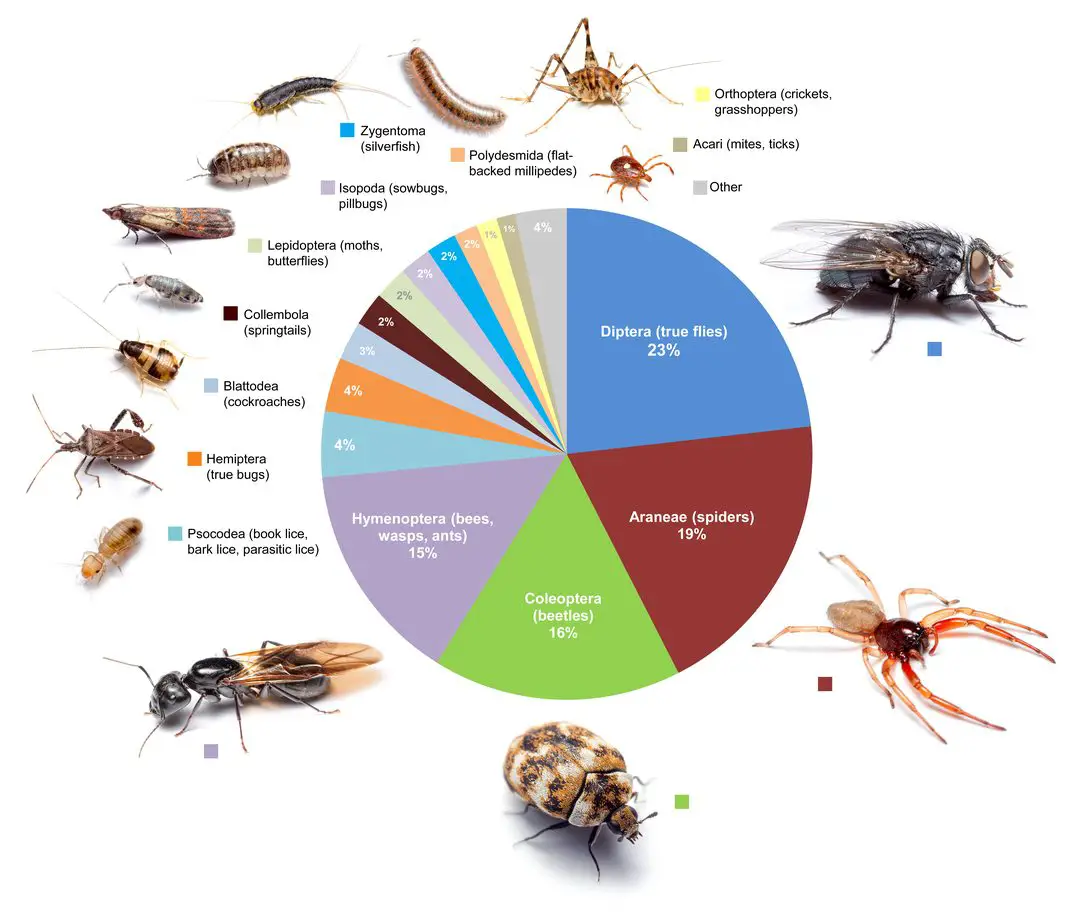
- The average home has between 10-50 spiders living in it.
- The number of spiders found in the home is dependent on the size of the home.
- Spiders prefer dark, hidden areas such as basements, attics and closets.
- Spiders also like to make their webs in windows, corners and other sheltered areas.
- Spiders can enter a home through open windows, doors, cracks and crevices.
- Spiders are most active during the night and can remain hidden during the day.
- Most spiders found in the home are harmless, although there are a few species of spiders that may bite if provoked.
Factors that Affect the Number of Spiders in a Home
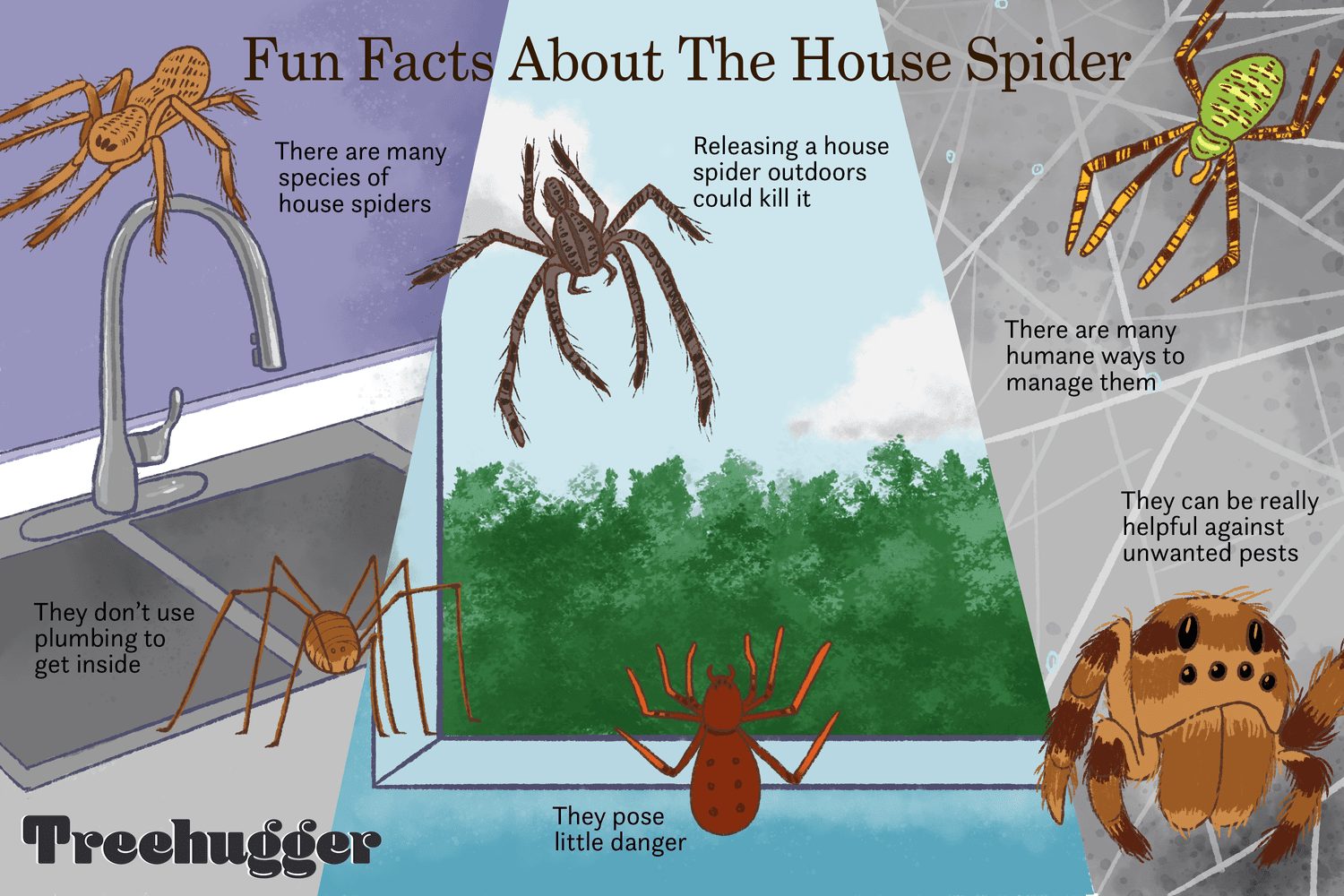
| Factor | Effect |
|---|---|
| Temperature | Temperature affects the number of spiders in a home, as warmer conditions typically lead to more spider activity. |
| Humidity | Higher humidity can increase the number of spiders, as spiders tend to prefer humid environments. |
| Food | The availability of food can affect the number of spiders in a home, as spiders require food to survive. |
| Location | The location of a home can influence the number of spiders that live there. Homes located in areas with a larger spider population, such as near forests or fields, may have more spiders than homes located in urban areas. |
| Pest Control | The use of pest control can reduce the number of spiders in a home, as chemicals used to kill spiders can make it difficult for them to survive. |
Spiders can be beneficial to a home, as they help to keep other pests in check. However, too many spiders can be a nuisance. Understanding the factors that affect the number of spiders in a home can help homeowners manage their spider population.
Ways to Reduce the Number of Spiders in a Home
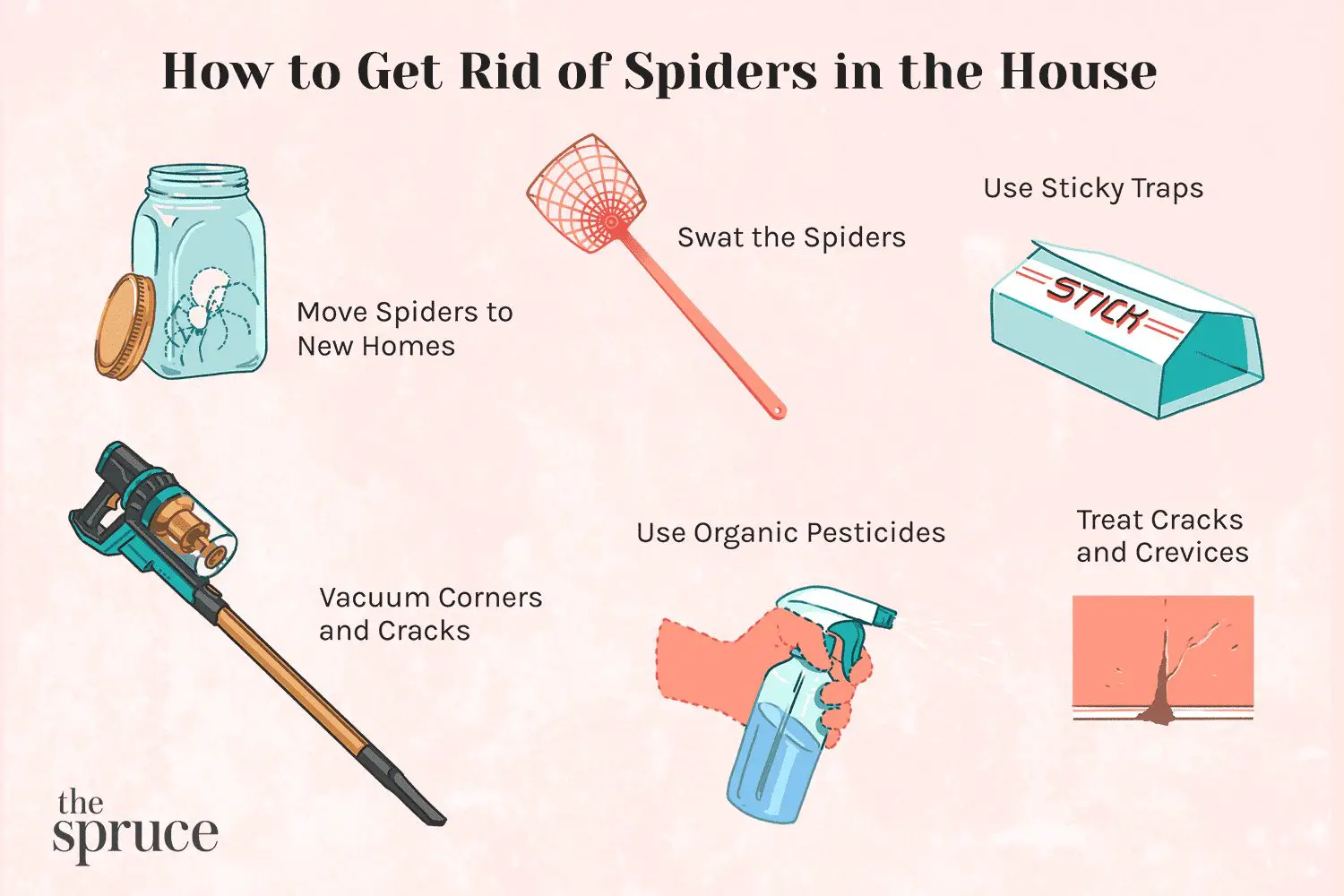
| Name of Solution | Description |
|---|---|
| Vacuuming | Regularly vacuuming areas where spiders are likely to be found, such as around windowsills and door frames, can help to reduce the number of spiders in the home. |
| Sealing Entry Points | Sealing any potential entry points, such as cracks in walls or windows, can help to prevent spiders from entering the home. |
| Removing Clutter | Spiders tend to hide in cluttered areas, so removing items such as piles of clothes and boxes can help to reduce the number of spiders in the home. |
| Using Insecticides | Insecticides can be used to kill spiders, however this should be done as a last resort as some insecticides can be toxic to humans. |
Benefits of Having Spiders in the Home
Spiders are beneficial creatures because they feed on insects, helping to control the insect population in the home. Spiders are also capable of killing pests, like flies and mosquitoes, which helps to reduce the spread of disease. Additionally, spiders are an important part of the food chain, as they are preyed upon by other animals, such as birds, lizards, and frogs. By providing a food source for these animals, spiders also help to maintain a healthy ecosystem. Finally, spiders are harmless to humans and are beneficial to have in the home, as they can help to reduce the need for insecticides, which can be hazardous to humans and pets.
Potential Hazards of Having Spiders in the Home
| Hazard | Details |
|---|---|
| Bites | Most spiders are harmless, but some can bite and cause pain, itching, and swelling. Some spider bites can also cause more serious reactions. |
| Allergies | Some people may have an allergic reaction to spider bites, which can range from mild to severe. |
| Spread of Diseases | Spiders can carry and transmit diseases, such as Lyme disease and West Nile virus, from one location to another. |
| Infestations | If left unchecked, spider infestations can become a serious problem, as spiders can quickly reproduce and spread throughout the home. |
| Structural Damage | Spiders can cause damage to the structure of the home, such as holes in walls and ceilings, and can even weaken the foundation if left unchecked. |
Frequently Asked Questions
How Many Spiders Can be Found in a Typical Home?
On average, a home contains between 50 and 300 spiders. This number varies depending on the amount of food, water, and shelter available for spiders. Spiders are usually found in dark, sheltered areas such as basements, closets, and attics. They also prefer areas of high humidity, such as bathrooms and kitchens. While some spiders are harmless, others can be a nuisance or even dangerous. It is important to identify and remove any spiders that may pose a threat to you or your family.
What can be done to reduce the amount of spiders in a home?
Homeowners can reduce the amount of spiders in their home by eliminating sources of food, such as insects and other pests. Keeping the home clean and free of clutter can also help reduce the number of spiders. Additionally, window and door screens should be kept in good condition to prevent spiders from entering the home. Outdoor lighting should be kept at a minimum, as this can attract insects which in turn attract spiders. Finally, spraying the perimeter of the home with a pesticide can help reduce the number of spiders.
Are there any particular areas of the home where spiders are more likely to be found?
Spiders tend to inhabit dark, undisturbed areas. Common areas in the home that they may be found include basements, attics, garages, crawl spaces, closets, behind furniture, and in storage boxes. Spiders are also drawn to moisture, so they may be found in bathrooms and near leaky pipes or windows.
Is there a difference between the number of spiders in a house and a home?
Spiders live in both houses and homes, however, the number of spiders in each can differ significantly. Generally, homes with fewer people living in them tend to have lower numbers of spiders as people are more likely to clean and remove spider webs from their home. In contrast, houses with more people tend to have more spiders due to the increased traffic, clutter and food sources. Additionally, the environment surrounding the house can also influence the number of spiders, such as the amount of vegetation or if the house is located near a river or other water source.
Are there any particular times of year when spider numbers are likely to increase in the home?
Yes, spider numbers are likely to increase in the home during the autumn months. This is because spiders lay their eggs in the late summer and early fall, and the babies emerge during this time. Spiders also seek shelter to hide from the cold weather and can find their way into your home. However, spiders are not just more abundant during the autumn months, but can be found in the home all year round.
Conclusion
Due to their small size and nocturnal behavior, spiders can be difficult to detect. However, they are a common element in every home, with an estimated average of one spider per square foot. While most of the spiders in our homes are harmless and beneficial, it is important to be aware of the presence of potentially dangerous species in your area, and to take extra precautions when necessary.






